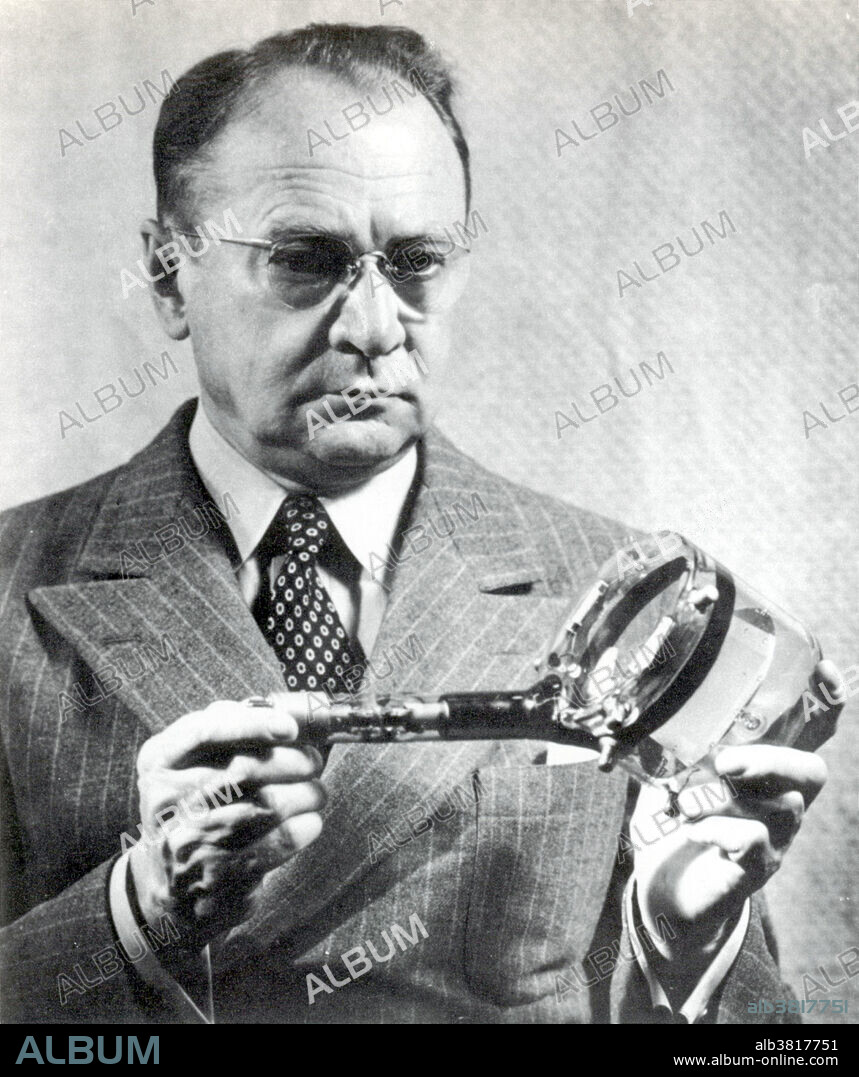alb3817751
Vladimir Zworykin, Russian-American Inventor

|
Zu einem anderen Lightbox hinzufügen |
|
Zu einem anderen Lightbox hinzufügen |



Haben Sie bereits ein Konto? Anmelden
Sie haben kein Konto? Registrieren
Dieses Bild kaufen

Titel:
Vladimir Zworykin, Russian-American Inventor
Untertitel:
Siehe automatische Übersetzung
Editorial use only . Zworykin holding an iconoscope, an early television camera tube. Vladimir Kosmich Zworykin (1888-1982), Russian-American inventor, engineer, and pioneer of television technology. In 1919, he emigrated to the United States to work at the Westinghouse laboratory in Pittsburgh. In 1929, he invented the cathode-ray tube called the kinescope and was one of the first to demonstrate a television system with all the features of modern picture tubes. Having developed the prototype of the receiver by December, Zworykin met David Sarnoff, who hired him and put him in charge of television development for RCA at their newly established laboratories in Camden, New Jersey. In 1931 he invented a new type of cathode ray transmitter, that he named Iconoscope, which became the leading camera tube used for TV broadcasting.
Bildnachweis:
Album / Science Source / New York Public Library
Freigaben (Releases):
Model: Nein - Eigentum: Nein
Rechtefragen?
Rechtefragen?
Bildgröße:
3300 x 3935 px | 37.2 MB
Druckgröße:
27.9 x 33.3 cm | 11.0 x 13.1 in (300 dpi)
Schlüsselwörter:
BERÜHMT • BERÜHMTE PERSÖNLICHKEIT • ERFINDER • FERNSEHEN • FISCH: ROCHEN • INGENIEUR • KAMERA • KOMMUNIKATION • MANN • NOTABEL • PERSON • PERSöNLICHKEITEN • PERSÖNLICHKEITEN • PROMINENZ • TECHNOLOGIE
 Pinterest
Pinterest Twitter
Twitter Facebook
Facebook Link kopieren
Link kopieren Email
Email
